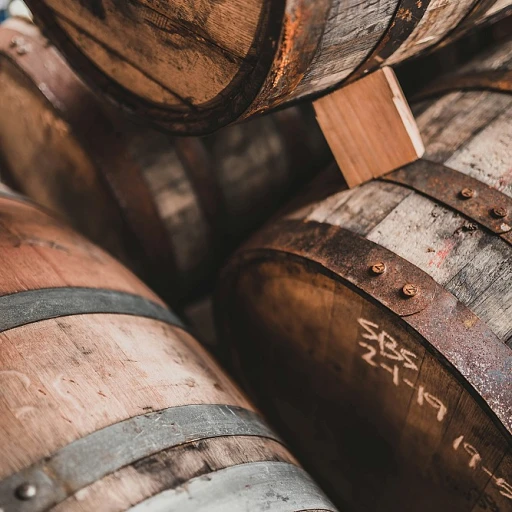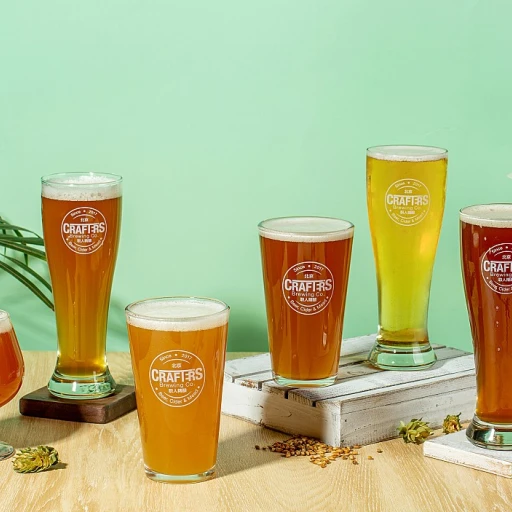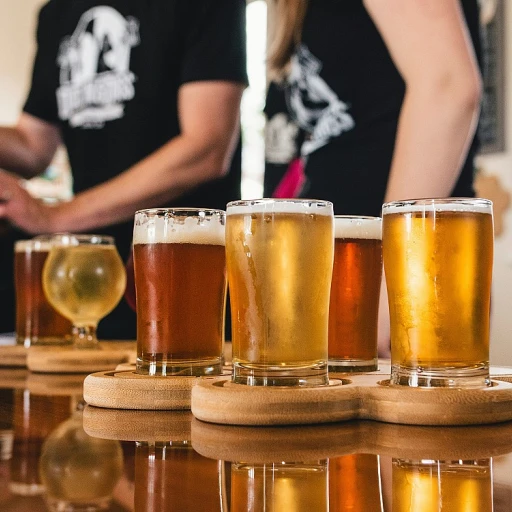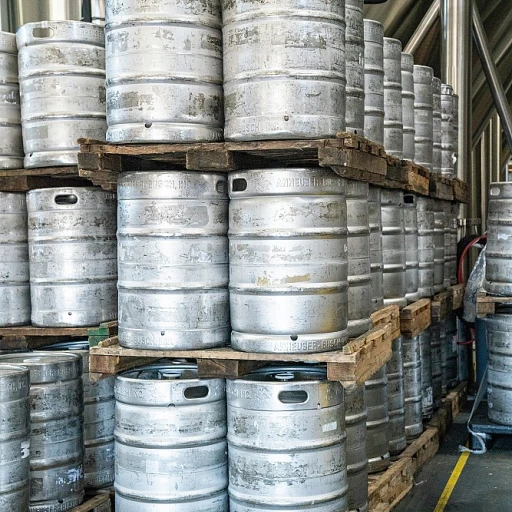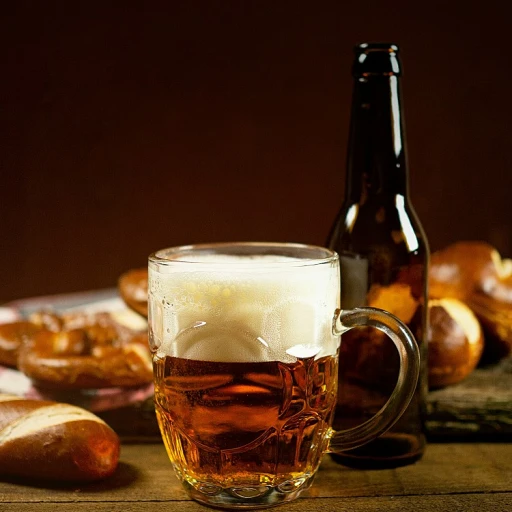
History and Evolution of Tap Handles
The Journey from Basic Functionality to Artistic Expression
Tap handles have come a long way from their humble beginnings. Initially, they served a purely functional role, simply allowing bartenders to control the flow of beer from the keg to the glass. As the beer industry evolved, so did the design and purpose of tap handles, transforming them into a canvas for creativity and brand identity.
In the early days, tap handles were basic levers, often made of wood or metal. Over time, as breweries began to compete for consumer attention, the tap handle became an essential marketing tool. Brewers realized that a unique and eye-catching tap handle could draw a patron's interest from across a crowded bar. This shift marked the beginning of tap handles as an art form, with designs ranging from the sleek and simple to the elaborate and whimsical.
Today, tap handles are crafted from a variety of materials, including resin, ceramic, and even glass. They are often designed to reflect the brewery's brand, the beer's flavor profile, or a seasonal theme. The artistry of tap handles has become a key element in the overall aesthetic of a bar, enhancing the drinking experience for beer enthusiasts.
For those interested in the stylish appeal of tap handles, you might also find the stylish appeal of beer crop tops an intriguing parallel in how beer culture influences fashion and design.
Selecting the Right Tap Handle for Your Needs
Choosing the Perfect Tap Handle to Match Your Style
Selecting the right tap handle is essential in expressing both the personality of your establishment and the essence of the beer being served. A well-chosen tap handle not only enhances aesthetic appeal but also plays a functional role in ensuring efficient and smooth beer flow. Here are a few considerations to keep in mind when picking the perfect tap handle:
- Material Matters: Tap handles come in a variety of materials including wood, metal, ceramic, and plastic. Wood offers a classic and rustic charm, while metal can provide a sleek, modern touch. Ceramic offers unique designs, and plastic provides durability and cost-effectiveness.
- Design and Branding: Tap handles are an excellent way to reinforce branding. Choose a design that not only looks good but also aligns with the brand identity of your beer and establishment. Custom tap handles can be crafted to feature specific logos or themes, making them a powerful marketing tool.
- Ergonomics: Beyond aesthetics, a tap handle must be easy to grab and use. Consider the size and shape to ensure it’s comfortable for bartenders to use repeatedly throughout a busy service.
- Compatibility: Make sure that the tap handle fits the specific faucet system you have in place. Most tap handles are designed for standard faucet dimensions, but double-check to avoid any mishaps during installation.
- Reflect Your Audience: Consider the clientele you are serving. Tap handles featuring whimsical designs may appeal to a youthful audience, while elegant or traditional designs might resonate with a more mature crowd.
Keep in mind that selecting the right tap handle can also be influenced by practical aspects such as cost and availability. For more insights on how inspirational accessories like beer jackets complement your unique beer style, find out why a beer jacket is more than just a trend.
Essential Tools for Tap Handle Maintenance
Must-Have Tools for Smooth Tap Handle Operation
Proper maintenance of your tap handle ensures its longevity and smooth operation. Here, we'll delve into the essential tools you need to keep your beer taps running efficiently and the entire experience enjoyable for both you and your patrons.
- Wrench Set: A reliable wrench set is crucial for tightening or loosening bolts and nuts on your tap system, allowing for easy adjustments and replacements.
- Tap Faucet Brush: Cleanliness is indispensable in maintaining your tap handle. A quality tap faucet brush enables you to scrub away residue and prevent unwanted build-up inside the taps.
- Screwdriver Set: Essential for installing or removing screws. A set with various sizes can accommodate different tap handle designs and hardware.
- Lubricating Oil: Keeping moving parts well-oiled reduces friction and wear, ensuring a smoother action when operating the tap handle.
Maintaining your tap handle can make a tangible difference in both appearance and function. For a deeper understanding of tap handle evolution and selection, check out the rich legacy that accompanies unique tap handle styles and choices.
Understanding Tap Handle Warnings and Safety
Emphasizing Safety with Tap Handles
Managing a tap handle is not just about aesthetics and functionality; it also involves adhering to safety guidelines to ensure a smooth and accident-free experience. Here’s what you need to keep in mind:- Handle Material and Design: When choosing a tap handle, consider materials that provide a comfortable grip and minimize slipping. Ergonomically designed handles can reduce the risk of hand strain, particularly for those serving with frequency.
- Regular Inspections: Periodically check your tap handles for any signs of wear or damage. Cracks or loose fittings can lead to operational hazards.
- Secure Installation: Ensure that your tap handle is properly secured to the tap faucet. An improperly installed handle can detatch during use, posing safety risks and possibly damaging equipment.
- Alert to Warnings: Always heed the manufacturer’s warnings or instructions. Misuse or ignoring these guidelines can lead to equipment failure or unsafe conditions.
Tips and Tricks for Tap Handle Installation
Tricks for a Flawless Installation
Ensuring that your tap handle is installed correctly is crucial for both aesthetics and functionality. These practical tips and tricks can help in achieving a perfect set-up that enhances your bar's appearance while maintaining practicality:
- Choose the Right Fit: Before starting the installation, ensure that the tap handle fits seamlessly with your draft system. Double-check the threading to avoid any issues during the installation process.
- Maintain Balance: Properly balancing the tap handle is important to ensure that it doesn't lean forward or backward. An imbalanced tap handle can lead to leaks or unwanted pours.
- Avoid Over-tightening: When attaching the handle, ensure that you don't over-tighten. A snug fit is adequate and prevents damage to both the handle and the faucet.
- Check Alignment: Once attached, make sure that the logo or artwork on the tap handle is appropriately aligned. A small adjustment goes a long way in creating an appealing visual.
- Regular Checks: Be proactive about checking the tap handle's attachment over time. Environmental factors or frequent use can lead to loosening, requiring periodic adjustments.
Anthony, a connoisseur with extensive experience, suggests a dry run with your handle to ensure no issues arise before your big event or gathering. Taking the extra time to ensure everything is just right, as outlined in our earlier sections, will make all the difference in creating a smooth and enjoyable pouring experience for everyone involved.



